The Intel SSD 600p (512GB) Review
by Billy Tallis on November 22, 2016 10:30 AM ESTRandom Read Performance
The random read test requests 4kB blocks and tests queue depths ranging from 1 to 32. The queue depth is doubled every three minutes, for a total test duration of 18 minutes. The test spans the entire drive, which is filled before the test starts. The primary score we report is an average of performances at queue depths 1, 2 and 4, as client usage typically consists mostly of low queue depth operations.
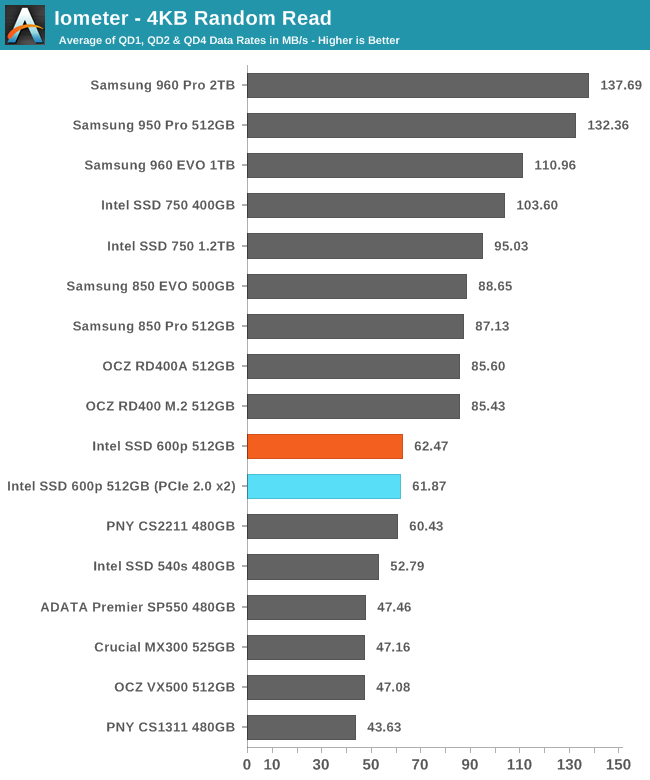
The Intel 600p has faster random reads than budget SATA SSDs, but it is significantly behind the Samsung 850 EVO.
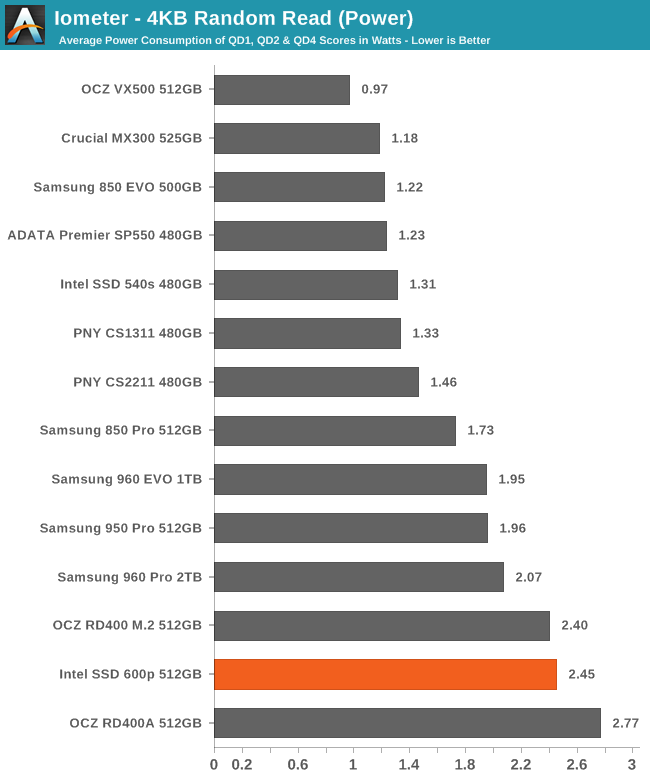
As usual, the 600p's power consumption is high, but not egregiously so: 2.45W is usually not high enough for thermal throttling to be a concern for M.2 SSDs.
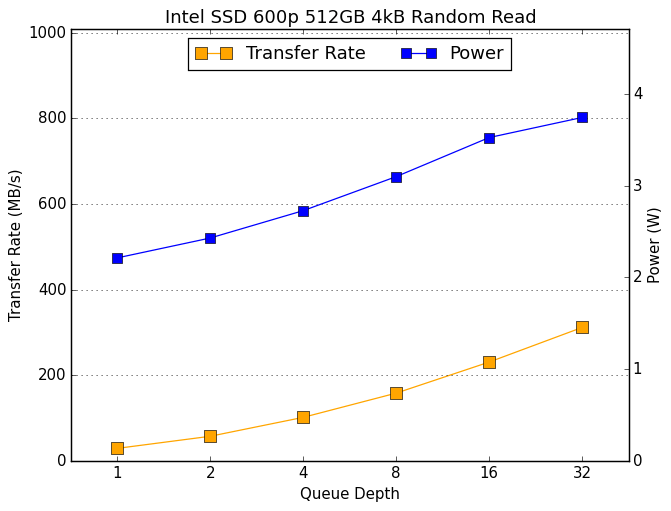 |
|||||||||
The 600p's performance grows slowly as queue depth increases, and even at QD32 it has not reached the SATA speed limit that Samsung's SATA drives hit at QD16.
Random Write Performance
The random write test writes 4kB blocks and tests queue depths ranging from 1 to 32. The queue depth is doubled every three minutes, for a total test duration of 18 minutes. The test is limited to a 16GB portion of the drive, and the drive is empty save for the 16GB test file. The primary score we report is an average of performances at queue depths 1, 2 and 4, as client usage typically consists mostly of low queue depth operations.
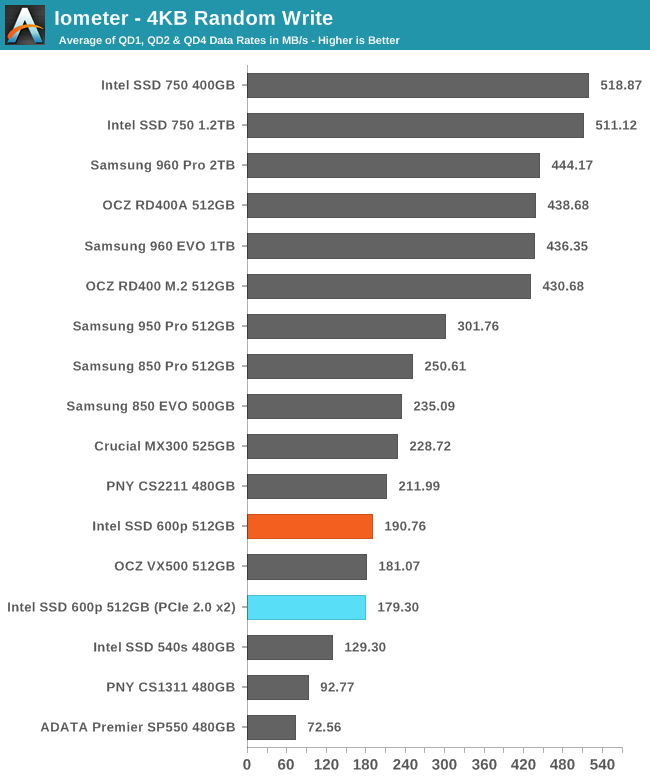
The 600p had above-average steady-state QD32 random write performance, but this shorter test of low queue depths puts the 600p only barely ahead of the slowest MLC SSD in this collection.
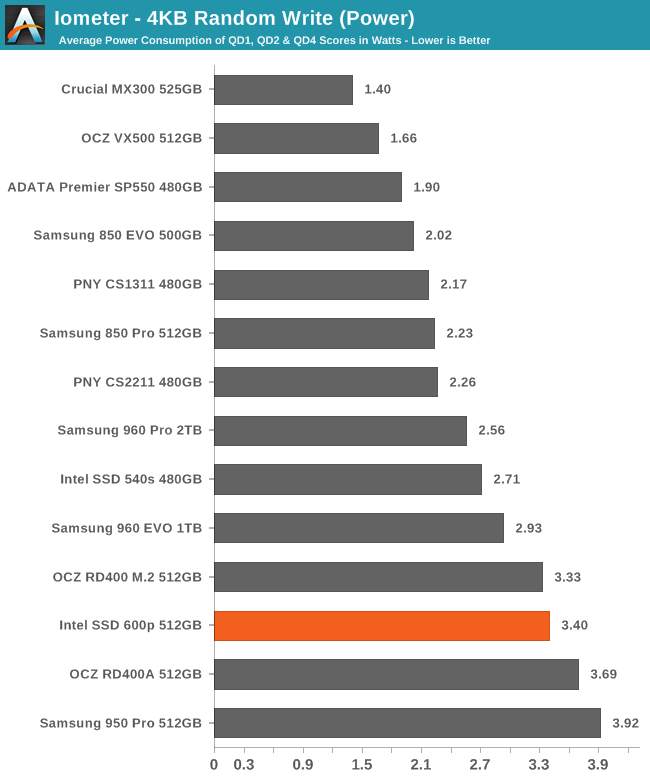
The 600p uses more power than most drives, but unlike the Samsung 950 Pro it isn't brushing up against the practical TDP limits of the M.2 form factor even at lowest queue depths.
 |
|||||||||
It is clear that the 600p's random write performance improves from QD1 to QD2, but after that all we're seeing in this graph is the same steady state variations we saw in the hour-long QD32 consistency test, potentially with some thermal throttling.










63 Comments
View All Comments
ramvalleru - Tuesday, December 6, 2016 - link
What advantages does Intel 600p has over Samsung 850 Evo with its 4 x pci-e. Less bottleneck with multi application writes and reads?KAlmquist - Friday, December 9, 2016 - link
If you mean compared to the 960 EVO, the 600p is less expensive. Also, with the 600p you are getting the Intel brand name and quality control, backed up with a 5 year warranty vs. a 3 year warranty on the 960 EVO.RetsamCP - Saturday, December 24, 2016 - link
I may just be a little confused but how did the 960 Pro 2TB bench and average service time latency of 160.9 ms in the Destroyer bench but score 0 for percentage of service times >100 ms?There had to be service times over 100 ms for the average to be over 100 ms, but how was the average affected so much when service times >100 ms made up <0.01% of the total benchmark?
What am I missing?